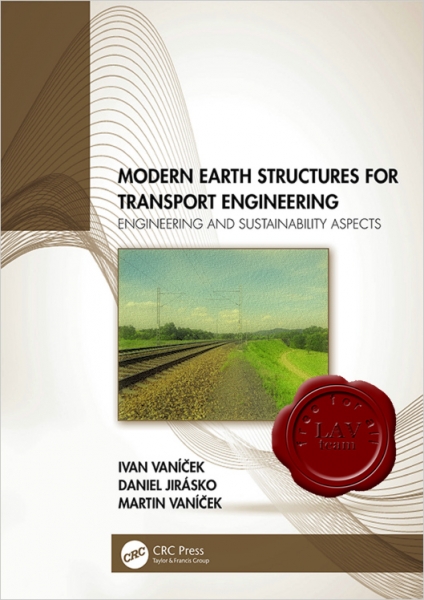Ivan Vanicek, Daniel Jirasko, Martin Vanicek - Modern Earth Structures for Transport Engineering
Engineering and Sustainability Aspects
CRC, 2020
pdf, 185 pages, english
ISBN: 978-0-429-26366-8

Earth structures together with foundation structures and underground structures fall under the more general subject matter of geotechnical structures. Under the term geotechnical structures earth structures are the oldest matter of concern, but rather paradoxically in comparison to foundation structures (foundation engineering) and to underground structures (tunnelling), the first monograph covering all aspects of earth structures was written only one decade ago (Vaníček and Vaníček, 2008). Briefly stated, we can use the following categorical explication for the division of geotechnical structures:
- Construction with ground for earth structures, where ground (soil) is the natural and most used construction material;
- Construction on the ground for foundation structures;
- Construction in the ground for underground structures.
This book will deal only with earth structures for transport engineering, although it is recognized that earth structures for water or environmental engineering also generate other interesting concerns. Embankments and cuts of motorways and railways comprise the main subject of the presented material. However, the main recommendations are valid also for airfields and parking areas.
Development in each profession is progressing in the form of individual steps, wherein a hierarchical part relates to new knowledge or to pressure from society to improve something, and a lateral part is more connected with the implementation of this knowledge into general practice. For earth structures, development was very slow up to the beginning of the 20th century, when design was mostly based on previous experience. The first significant advance is usually connected with the principle of effective stresses and the theory of consolidation (Terzaghi, 1925, 1943). Other advances were made in the 1950s to 1970s with new testing devices Bishop and Henkel (1957, 1962), the principle of stress path (Lambe and Whitman, 1969), and the implementation of numerical methods for the design of structures (Zienkiewicz, 1967).
Present-day demands on earth structures in transport engineering are strongly influenced by two aspects.
The technical engineering aspect involves structure safety, along with optimal design and implementation. From this perspective, all new knowledge should be applied. Nevertheless, the basic approach to safety and optimal design is strongly affected by geotechnical risk, to which this design and structure implementation is connected. However, to guarantee a certain level of safety for a certain structure, some standards should be accepted. For example, in Europe these standards are included in Eurocode 7 (EC 7) Geotechnical Design (EN 1997).
The second aspect is strongly connected with acceptance of the principle of sustainable development, which was specified at the highest level during the international "Environmental Summit” in Rio de Janeiro in 1992. Gro Harlem Brundtland, the Norwegian prime minister, used for example the following definition of sustainable development: "Development which responds to the needs of the present without compromising the capacity of future generations to respond to their needs.” However, the sustainability approach strongly relates to two other principles, which are nowadays specified for earth structures in transport engineering – the principles of availability and affordability.
Both aspects form the essence of this book, and therefore the term "modern” can be used for this stage of development. The authors recognize with great appreciation support from the Czech Technical University in Prague where the research project CESTI (the Centre for Effective and Sustainable Transport Infrastructure) is being carried out.